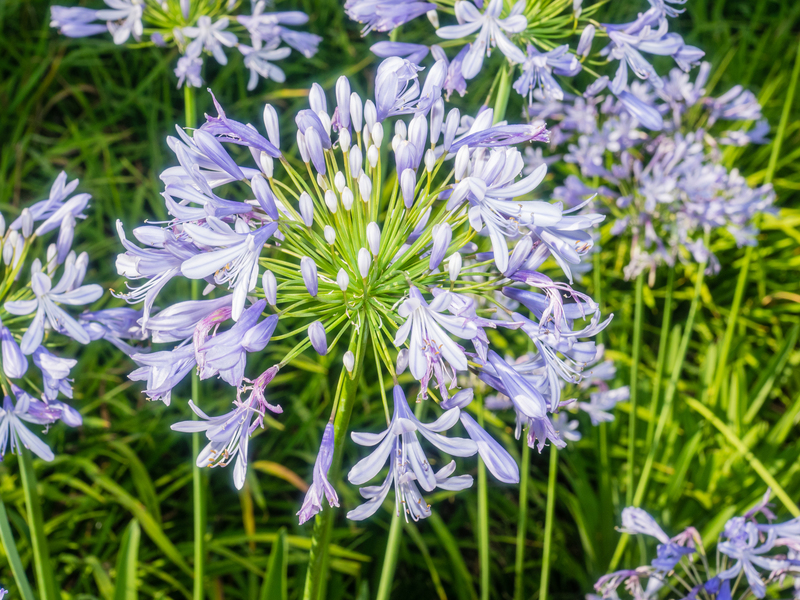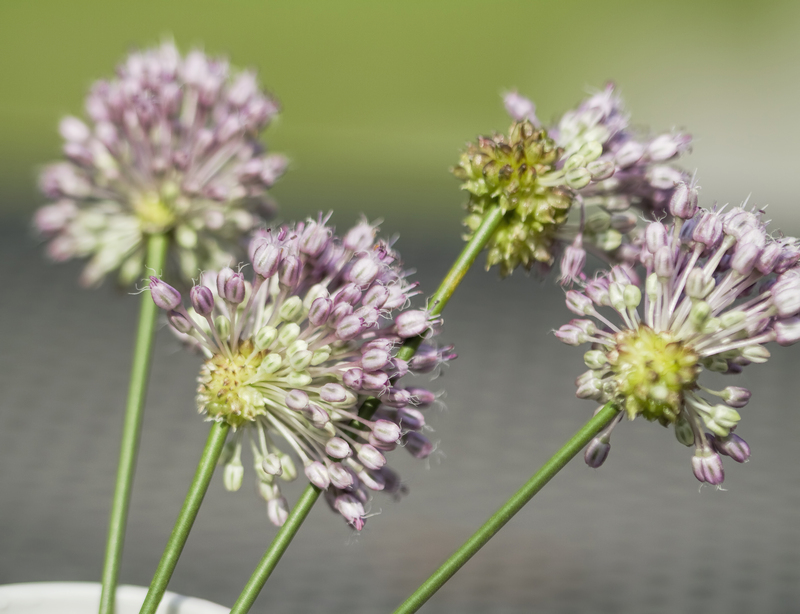Enchanting Greenery Choices That Double as Garden Privacy Screens
Transform your outdoor space into a private paradise with lush, living green privacy screens. Discover the best plants and creative ideas to enhance your sanctuary with enchanting, nature-inspired solutions.
Why Choose Greenery for Your Garden Privacy Screen?
Fencing and walls may offer security, but nothing quite compares to the charm and tranquility provided by natural greenery. Living privacy screens do more than just block unwanted views--they elevate your landscaping design, provide shade, reduce noise, and invite wildlife. Enchanting greenery choices for garden privacy bring year-round beauty, and choosing the right plants can ensure seclusion along with a lasting visual feast.
- Aesthetic Appeal: Lush foliage softens hard lines and adds texture.
- Eco-Friendly: Plants improve air quality and foster biodiversity.
- Versatile: Flexible options suit small balconies to sprawling estates.
- Year-Round Interest: With layered planting choices, privacy and color can last through every season.

Top Plant Choices for Natural Garden Privacy Screens
When selecting the best green plants for privacy, consider growth speed, maintenance, climate, and desired height. Here are the most enchanting options for living screens:
1. Bamboo - Fast-Growing & Lush
Bamboo is renowned for its rapid growth and dense canopy. This makes it an ideal choice for gardeners seeking quick results. Clumping bamboo varieties are non-invasive and form a thick, vertical wall of rich greenery. Bamboo is perfect for contemporary landscapes and is drought-tolerant once established.
- Pros: Easy to maintain, evergreen, adapts well to containers.
- Cons: Some species spread aggressively; choose clumping types for manageable growth.
2. Evergreen Hedges - Classic Elegance & Year-Round Privacy
Nothing says traditional garden privacy like a manicured evergreen hedge. Consider options like Boxwood (Buxus), Yew (Taxus baccata), or Privet (Ligustrum), each offering dense foliage that can be shaped to precise heights and forms.
- Pros: Formal appearance, evergreen, tolerates pruning.
- Cons: Requires regular trimming for a tidy look.
3. Laurel (Prunus laurocerasus) - Broadleaf Evergreen for Large Spaces
For a robust, leafy wall, cherry laurel is unbeatable. The plant's glossy dark green leaves provide exceptional privacy all year long. Laurel screens are highly adaptable to different soils and urban environments.
- Pros: Fast-growing, low maintenance, grows tall and wide.
- Cons: Can become too dense without periodic thinning.
4. Arborvitae (Thuja) - Coniferous Privacy Evergreens
Arborvitae, such as the popular 'Green Giant', are highly favored for their upright habit and lush, green needles. They create tall, uniform barriers in record time, with minimal care required once they're established.
- Pros: Ideal for tall screens, pest-resistant, holds shape naturally.
- Cons: Needs adequate sunlight and well-drained soil.
5. Clematis, Jasmine, and Flowering Vines - Romantic & Colorful Privacy
Train flowering vines onto trellises, arches or fences to craft a living screen that bursts with seasonal color and fragrance. Clematis, honeysuckle, and star jasmine are favorites for their fast growth and decorative flowers.
- Pros: Ideal for small spaces, adds blooms and scent, attracts pollinators.
- Cons: Usually deciduous (some lose leaves in winter), requires support structure.
6. Holly (Ilex aquifolium) - Prickly, Evergreen Security
Holly shrubs not only serve as an effective privacy screen but also deter trespassers with their spiky leaves. Their glossy foliage, white flowers, and bright red berries deliver year-round appeal.
- Pros: Wildlife-friendly, tolerates shade, low maintenance.
- Cons: Grows slowly compared to some alternatives.
7. Bamboo Palms and Compact Trees - Tropical Accent with Privacy
For a more exotic effect, cluster clumping palm trees or use slender ornamental trees such as Olive, Crape Myrtle, or Japanese Maple. These can be underplanted with ferns or perennials, providing layered privacy and depth to your design.
- Pros: Offers shade, visual interest, works in pots for patios.
- Cons: Trees may need time to establish true screening height.
How to Create Effective Living Privacy Screens
Assess Your Space and Sunlight
Analyze the orientation of your garden, prevailing winds, and the amount of sun or shade. Some privacy plants prefer full sun, while others thrive in shade.
Layer for Maximum Effect
Lay out plantings in staggered rows or combine tall screens with lower shrubs and groundcovers. This creates visual depth, maximizes privacy, and enhances your landscape's biodiversity.
- Combine evergreen hedges with flowering borders.
- Use vines to climb existing fences or trellises.
- Mix fast-growers with slower, longer-lived varieties for enduring coverage.
Consider Maintenance Needs
Some green screens grow rapidly and must be pruned regularly to maintain shape and health. Others demand less attention but take longer to reach full height. Plan and choose accordingly to suit your gardening style.
Enchanting Design Ideas Using Green Garden Privacy Screens
Living Walls and Vertical Gardens
If space is at a premium, utilize vertical planting systems. Modular living wall panels can be filled with herbs, succulents, ferns, and trailing perennials to create a visually stunning, functional privacy barrier.
- Attach wall planters to fences for layered interest.
- Use drought-tolerant plants for low-maintenance beauty.
Screening Seating Areas and Patios
Create cozy garden rooms by placing planters of bamboo, citrus, or hydrangea around your deck or terrace. Tall potted plants are mobile and can be rearranged as needed to adjust your levels of privacy throughout the year.
Secret Pathways and Hidden Corners
Use hedges, espaliered trees, or tall grasses to create hidden pathways or secluded nooks within your garden. The sense of discovery enhances enchantment and ensures your outdoor haven feels truly your own.
Climate Adaptation: Choosing Plants for Your Region
The right living privacy screen plants will be easy to care for and well-adapted to your local climate. Consider your plant hardiness zone, rainfall levels, and soil conditions before selecting species.
- Hot, Dry Climates: Opt for oleander, Italian cypress, lavender, or clumping bamboo.
- Cold Climates: Arborvitae, boxwood, yew, and holly thrive in chilly conditions.
- Partial Shade: Try laurel, camellia, hydrangea, and shade-tolerant evergreens.
- Coastal Areas: Escallonia, pittosporum, and griselinia handle salty winds and sandy soils.
Maintenance Tips for Long-Lasting Green Privacy Screens
- Water deeply: Especially during the first year as roots establish.
- Mulch generously: Conserve moisture, suppress weeds, and feed soil life.
- Prune with purpose: Regularly trim for thickness, shape, and to avoid overgrowth.
- Fertilize as needed: Use organic compost or slow-release fertilizers for lush growth.
With proper care, your enchanting living privacy screen will thrive for years, providing continuous beauty and serenity.
Frequently Asked Questions about Green Garden Privacy Screens
How tall should a living privacy screen be?
For most situations, a height of 6-8 feet offers effective screening. However, plant choices like bamboo or arborvitae can reach up to 20 feet or more. Choose according to your needs and the look you wish to achieve.
Are green privacy screens better than fences?
Living screens are softer in appearance, improve the ecosystem, and grow more beautiful with each season. While they may take time to establish compared to instant fencing, the long-term benefits often outweigh the wait.
Which plants grow fastest for privacy?
Bamboo, privet, and laurel are among the fastest-growing options. Remember to check for non-invasive varieties to avoid unwanted spread.
Can I use potted plants for privacy screens?
Absolutely! Potted clumping bamboo, tall grasses, evergreen shrubs, and even small trees make fantastic movable privacy solutions for patios and balconies.

Conclusion: Transform Your Garden with Enchanting Green Privacy
In a world where relaxation and solitude are cherished, enchanting greenery screens stand apart. From the tall elegance of arborvitae to the romantic blooms of jasmine, there is a living privacy plant perfect for your garden's character and climate.
By swapping sterile walls for lush, layered foliage, you'll invite a sense of magic, sanctuary, and biodiversity into your outdoor space. Whether your garden is compact or sprawling, classic or modern, the right natural privacy screen can turn it into your own verdant escape.
Dare to choose greenery that doubles as privacy--your secret garden awaits!